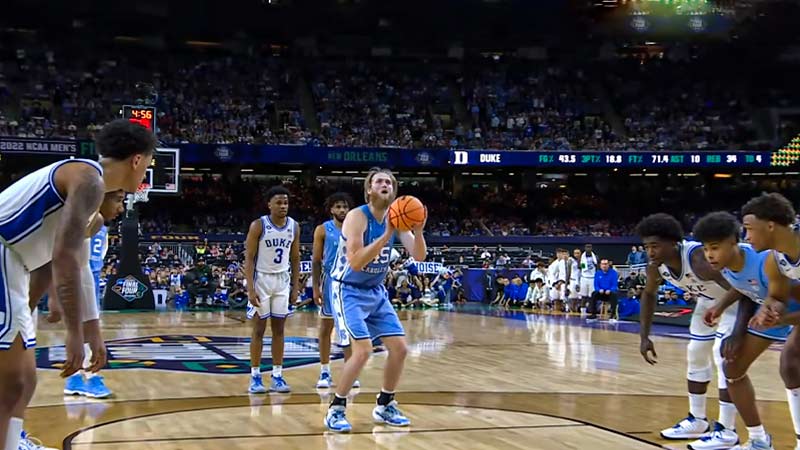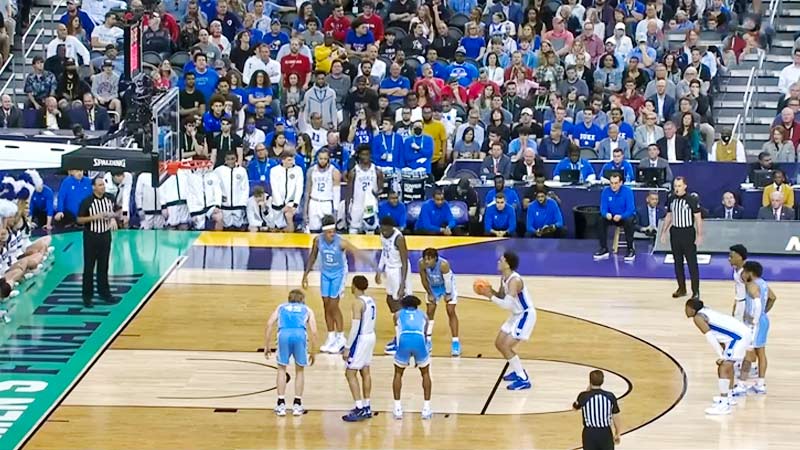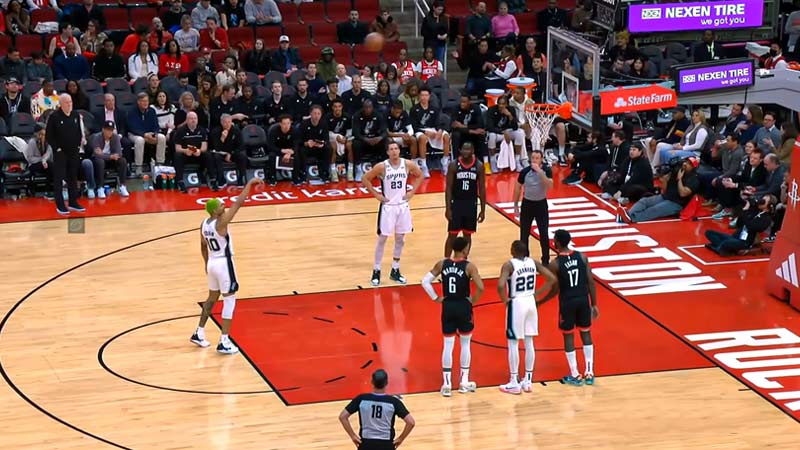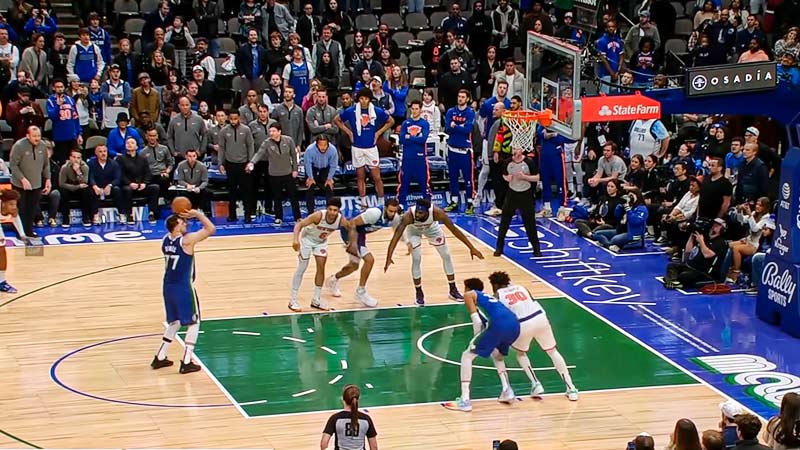Basketball is a sport that features various rules and regulations, and one term that often comes up during games is “bonus.”
If you’re a basketball enthusiast or a player looking to deepen your understanding of the game, this article will provide comprehensive insights into what a bonus in basketball means.
We will explore the bonus rules in different basketball leagues, including the NBA, NCAA, FIBA, college basketball, and high school basketball.
The significance of these bonus rules, their historical context, and any associated controversies will enhance your knowledge of basketball and its gameplay. Stay focused.
What Is a Bonus in Basketball?
A bonus refers to a set of rules that determine free-throw opportunities for teams based on the number of fouls committed by the opposing team.
When a team reaches a specific foul limit within a designated period, such as a quarter or a half, the opposing team is awarded free throws.
The bonus rules vary across different basketball leagues and levels, such as the NBA, NCAA, FIBA, college basketball, and high school basketball.
These rules play a significant role in the flow and strategy of the game, adding excitement and influencing scoring opportunities.
Bonus Rules in Basketball
The term “bonus” in basketball refers to a set of rules that determine free-throw opportunities for teams during a specific period of gameplay.
These rules vary depending on the league or level of basketball being played. Let’s explore the bonus rules in different basketball contexts:
Bonus Rules in the NBA
In the National Basketball Association (NBA), the bonus is known as the “team foul penalty.” When a team commits a certain number of fouls within a specific period, usually a quarter, the opposing team is awarded free throws, regardless of the type of foul committed.
The NBA bonus is commonly divided into two stages: the “bonus” and the “double bonus.”
During the “bonus,” which usually occurs after the fourth team fouls in a quarter, the opposing team is awarded one free throw. If the first free throw is made, the play continues.
However, if the first free throw is missed, the ball is live, and both teams have an opportunity to secure the rebound.
If the shooter successfully makes the first free throw, the “double bonus” is not in effect, and no additional free throws are awarded.
Once a team commits its fifth foul in a quarter, the “double bonus” is in effect. This means that the opposing team is awarded two free throws for each subsequent foul.
Whether the first free throw is made or missed, the opposing team retains possession of the ball after the final free throw attempt.
Bonus Rules in the NCAA

In the National Collegiate Athletic Association (NCAA), the bonus is referred to as the “one-and-one” rule. When a team commits a specified number of fouls within a half, the opposing team is awarded one free throw.
If the first free throw is successfully made, the shooter earns another attempt. This is known as the “one-and-one” opportunity.
The NCAA bonus is typically implemented after a team commits seven fouls in a half. Once a team reaches this limit, the opposing team is awarded two free throws for each subsequent foul, and the “one-and-one” rule no longer applies.
If a team reaches the bonus before the end of a half, every non-shooting foul committed by that team results in two free throws for the opponent.
Bonus Rules in FIBA
In international basketball governed by the International Basketball Federation (FIBA), the bonus rules are similar to the NCAA’s “one-and-one” rule. Once a team reaches a specified number of team fouls within a quarter, the opposing team is awarded one free throw.
If the first free throw is made, the shooter is given a second attempt. Subsequent fouls result in two free throws for the opposing team.
The bonus is usually implemented after a team commits five fouls in a quarter. If a team reaches this limit before the end of a quarter, all subsequent non-shooting fouls committed by that team result in two free throws for the opponent.
Bonus Rules in College Basketball
College basketball follows the NCAA bonus rules, employing the “one-and-one” system for awarding free throws based on team fouls.
The bonus is typically implemented after a certain number of team fouls within a half, resulting in one free throw followed by a second attempt if the first is successful.
Bonus Rules in High School Basketball
In high school basketball, the bonus rules also resemble the NCAA’s “one-and-one” system. Teams are awarded one free throw for each foul committed by the opponent once a certain team foul limit is reached within a half.
Once a team reaches the bonus, subsequent fouls result in two free throws for the opposing team.
The bonus rules in basketball are important for players, coaches, and fans as they directly impact the flow and strategy of the game
Significance of Bonus Rules in Basketball

The bonus rules in basketball play a significant role in the flow and strategy of the game. These rules can influence gameplay dynamics, fouling strategies, and scoring opportunities for teams.
The significance of the bonus rules allows players and coaches to make strategic decisions regarding foul management, clock management, and maximizing scoring potential. Let’s explore the importance of the bonus rules in more detail.
Influencing Gameplay Dynamics
The bonus rules have a direct impact on how the game is played. When a team reaches a certain number of team fouls in a given period (quarter or half), they enter the bonus or penalty situation.
This means that any subsequent fouls committed by the defensive team will result in free throws for the offensive team, regardless of the nature of the foul.
This rule encourages offensive aggression and rewards teams that can draw fouls by attacking the basket or creating a contact.
Conversely, the defensive team must be cautious not to commit fouls, as it can put them at a disadvantage by giving the opposing team free scoring opportunities.
The bonus rules, therefore, create a balance between offensive and defensive strategies, as teams need to weigh the risks and rewards of aggressive play and foul management.
Fouling Strategies and Clock Management
The bonus rules also influence fouling strategies and clock management. When a team is trailing late in the game, they may choose to intentionally foul their opponents to stop the clock and force them to earn points from the free-throw line.
This strategy, known as “hacking” or “strategic fouling,” aims to extend the game and create additional scoring opportunities for the trailing team.
Additionally, teams in the bonus can strategically draw fouls by attacking the basket or utilizing plays that put pressure on the defense.
By doing so, they can earn trips to the free-throw line, allowing them to score points without the clock running and potentially closing the gap or maintaining a lead.
Maximizing Scoring Potential
The bonus rules add an element of excitement and tension to the game, as free-throw opportunities can significantly impact the outcome.
Teams in the bonus have an opportunity to score points without any defensive pressure, increasing their chances of adding to their overall score.
Conversely, teams defending against bonus situations must be disciplined and avoid fouling, as it grants their opponents an opportunity to score efficiently.
Free throws also provide a chance for players to showcase their shooting skills and mental composure.
The ability to convert free throws consistently is a valuable asset, as it allows players to contribute to their team’s scoring even when faced with defensive pressure.
History of Bonus Rules in Basketball

The implementation of bonus rules in basketball dates back several decades. Initially, basketball did not have specific bonus rules, and free throws were awarded for each individual foul committed.
However, as the sport evolved, the introduction of bonus rules brought more structure and consistency to the awarding of free-throw opportunities.
The exact timeline and evolution of bonus rules can vary between different basketball leagues and organizations, but their purpose has remained consistent—to regulate the number of fouls required for free-throw awards and to ensure fairness and competitiveness in the game.
The bonus rules were implemented to prevent excessive fouling and to provide teams with a fair chance to earn free throws.
Controversy With the Bonus in Basketball
As with any aspect of sports, bonus rules in basketball have faced their fair share of controversy. One point of contention revolves around intentional fouling strategies employed by teams trailing in the game.
By deliberately committing fouls, teams can send their opponents to the free-throw line and potentially gain possession without the clock running.
This tactic, known as “hack-a-player,” has sparked debates regarding its impact on the flow and entertainment value of the game.
Critics argue that intentional fouling disrupts the natural rhythm of the game, slows down the pace, and reduces its overall excitement.
They believe that teams resorting to intentional fouling are exploiting a loophole in the rules to gain an unfair advantage.
On the other hand, proponents of intentional fouling argue that it is a legitimate strategy that forces poor free-throw shooters to prove their skills and adds strategic complexity to the game.
To address this issue, various basketball leagues have explored rule changes. Some leagues have introduced provisions such as the “one-minute rule” or the “last two minutes rule,” where intentional fouls committed away from the ball result in free throws and possession.
These changes aim to discourage excessive fouling tactics and maintain a more fluid and engaging game for both players and fans.
While the controversy surrounding bonus rules continues, it remains an integral part of basketball’s structure and strategy.
The rules continue to evolve as leagues strive to strike a balance between maintaining fairness and competitiveness while enhancing the overall experience for everyone involved.
FAQs
Can a team reach the bonus in basketball during overtime?
Yes, the bonus rules in basketball apply to both regular game time and overtime. If a team reaches the specified number of fouls within the designated period, the opposing team is awarded free throws.
Can technical fouls contribute to the bonus in basketball?
It depends on the specific league or organization. In some cases, technical fouls count toward the team’s total fouls, which can lead to a bonus.
However, technical fouls may have their separate consequences, such as immediate free throws or possession changes, without affecting the bonus.
Do bonus rules apply to offensive fouls?
No, bonus rules in basketball typically apply only to defensive fouls. Offensive fouls, such as charging or illegal screens, do not count toward the bonus.
What happens if a player commits a personal foul while in the bonus?
If a player commits a personal foul while their team is in the bonus, the opposing team is awarded free throws, regardless of the type of foul committed.
Can a team reset their fouls to zero after reaching the bonus?
No, once a team reaches the bonus, their fouls continue to accumulate throughout the designated period. There is no reset to zero until the start of a new period.
End Call
The concept of the bonus in basketball is essential for players, coaches, and fans. The bonus rules dictate the awarding of free throws based on team fouls, adding strategic elements to the game.
By knowing the bonus rules in different basketball leagues and levels, the significance of these rules, their historical context, and any associated controversies, you can enhance your overall understanding and appreciation of the sport.
So, next time you watch a basketball game, pay attention to the bonus and observe how it shapes the course of the game and the strategies employed by teams. Best of luck.







